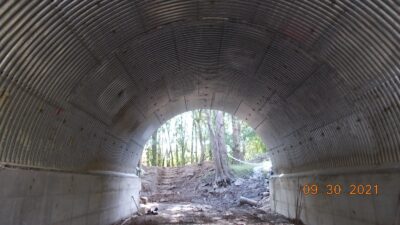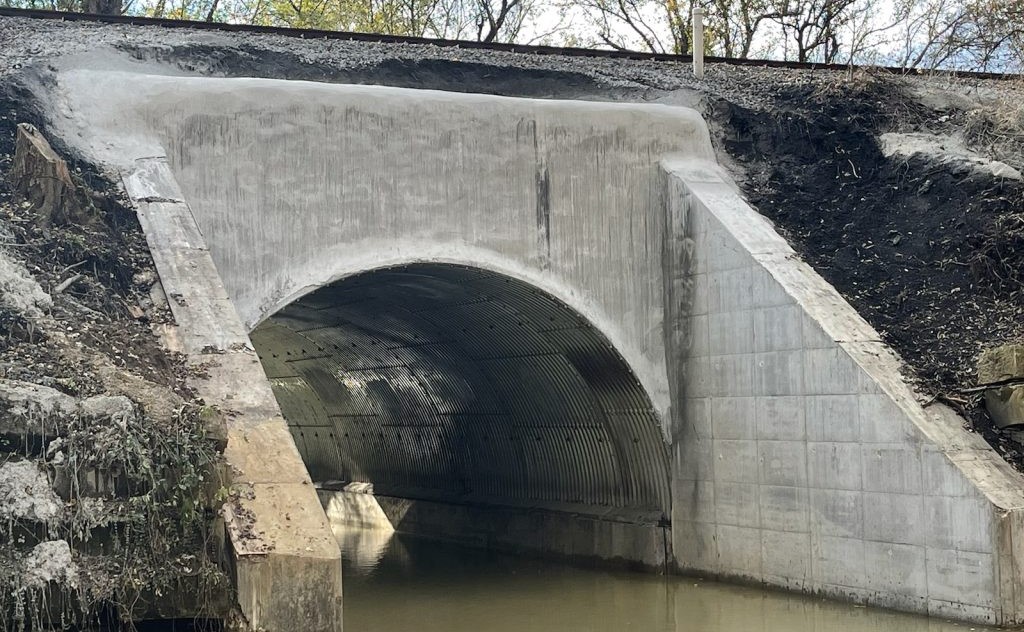
Norfolk Southern Bridge Wins NCSPA Project of the Year Award
Article provided by Lane Enterprises and the National Corrugated Steel Pipe Association
A widespread problem for the railways is the many stone arch bridges and tunnels having reached the end of their service life. These structures were essentially constructed in one generation – and one generation is witnessing the need for their replacement.
Shutting down the tracks is equivalent to shutting down the revenue stream, and the construction times associated with remove and replace projects makes these considerations unrealistic at best. As a result, the railways prefer to rehabilitate these structures in place while rail transports seamlessly continue.
The Norfolk Southern Bridge over Stoney Creek is a classic example of how structural integrity to an existing bridge can be restored without disrupting rail operations.
After exploring various options a decision was made to use steel structural plate to line the stone arch interior. While a structural plate arch is a stand-alone structure when properly backfilled in standard embankment or trench construction, integration into the existing stone arch is necessary for the plate arch to function properly. By completely grouting the annulus the two become one and the stone arch is rehabilitated.
After verifying the dimensions of the existing stone arch a decision was made to use a 26-ft span, 13-ft rise, 5-gage, single-radius structural plate arch with 6” x 2” corrugations.
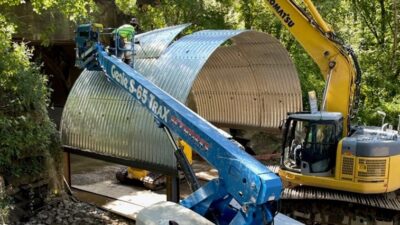
Segments of the structural plate liner were assembled on stilts outside the arch so that assembled rings could be successively slid onto the concrete pedestal.
The plate arch first needed a new foundation constructed along the inside of the existing arch, and a dewatering operation facilitated construction of a cast-in-place pedestal footer.
Segments of the structural plate liner were assembled on stilts outside the arch so that assembled rings could be successively slid onto the concrete pedestal. Once the stone arch was completely lined with structural plate the annular space between the two arch structures was filled with grout through prefabricated ports along the new structure. The rehabilitation was complete with new concrete headwalls and wingwalls, formed and poured on the outside of the structure to give the project a finished look
What are buried steel bridges?
Buried steel bridges provide an economical choices for bridge replacement or bridge rehabilitation.
They essentially are a corrugated steel pipe or structural plate pipe systems that is “buried” with backfill to carry loads through soil-structure interaction. This means the bridge structure itself and the backfill soils surrounding the structure interact with each other to support the loads. In effect, the backfill material is part of the bridge.
Because of this interaction, the bridge structure is typically lighter, and there can be significant savings in structure costs.
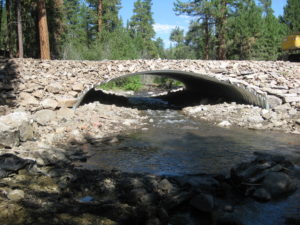
There are also many cases where buried bridges can carry heavier loads than traditional bridges because of the benefits of spreading vehicle loads through the fill. Buried bridges do not require abutments; and unless foundation soil conditions are poor, do not typically
require deep foundations.An additional benefit with buried bridges is that they can be tailored to site conditions and geometric requirements. The design includes inputs for site soils and backfill, meaning that locally available materials can often be used in construction and the structure can be tailored to fit the needs of the site and the owner’s requirements.
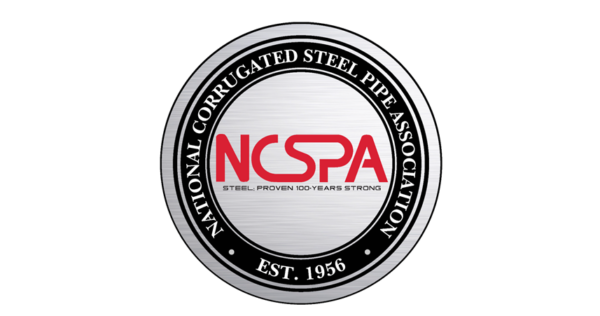 News
News
NCSPA Announces 2024 Project of the Year Winners
The National Corrugated Steel Pipe Association announced the 2024 project of the year winners, including three members of the Short Span Steel Bridge Alliance.
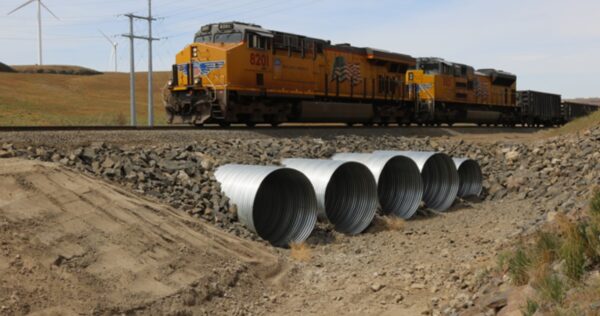 Case Study
Case Study
Corrugated Steel Pipe Safeguards Rail System from Excessive Storm Water
The National Corrugated Steel Pipe Association (NCSPA) spotlights a project that used corrugated steel pipe to provide a storm water solution in only 8 hours.
 News
News
New Resiliency Video Compares Corrugated Steel Pipe to Other Materials
The National Corrugated Steel Pipe Association (NCSPA) launched a new video focused on the resiliency of corrugated steel pipe – commonly used in buried steel bridges.
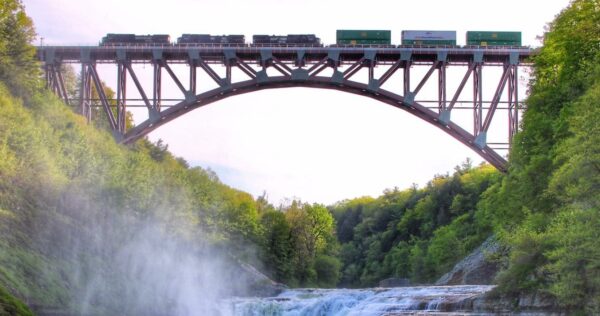 News
News
Funding On Its Way for Rail Bridges
The Biden administration announced $16.4 billion for rail projects along Amtrak’s Northeast Corridor as part of the overall investments in infrastructure.
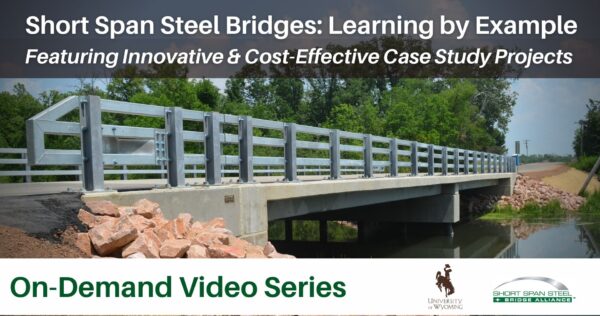 Buried Bridge
Buried Bridge
On-Demand Steel Bridge Video Series: Learning By Example
A distinguished panel of 8 industry experts to present case studies that offer innovative and cost-effective examples of steel bridge replacement projects.
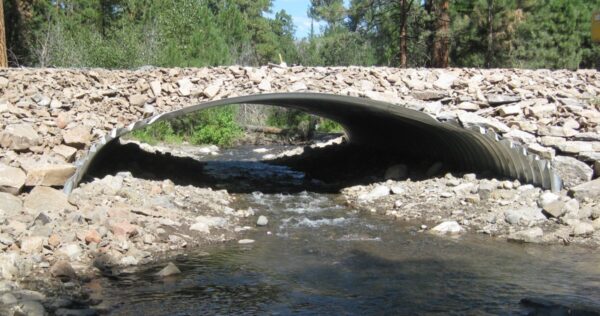 Events
Events
October 31: Webinar – Demonstrated Performance of Buried Bridges
The American Galvanizers Association invites you to attend a 1-hour webinar sustainable development and hot-dip galvanizing.
 Short Span Steel Bridges
Short Span Steel Bridges 